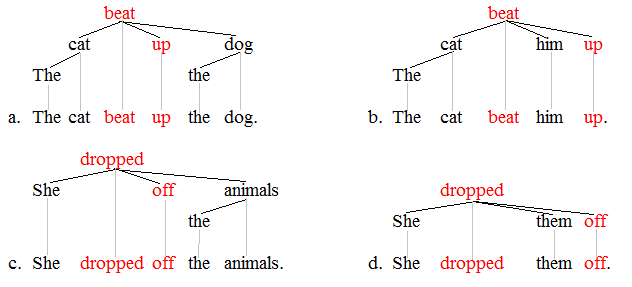|
Téarma
Tearma.ieThe site is at "tearma.ie", not at the internationalized domain name "téarma.ie". (previously Focal.ie) is the website of a lexical database for terminology in the Irish language. It is funded by the Irish state and Interreg and maintained by Fiontar & Scoil na Gaeilge, the Irish-language unit of Dublin City University, in collaboration with the Terminology Committee of Foras na Gaeilge. History Phase I (2004–7) of the work consisted of digitising and integrating existing paper and electronic lists. Several resources have been added under subsequent phases. A dictionary of 10,000 sports terms has been added as well as tools for translation memories and other resources for translators including a link facility to The New Corpus for Ireland. Phase IV (2011–14) of the project had the following objectives: * To implement a new domain hierarchy, based on DANTERM (the Danish terminology standard); * To create definitions for some terms; * To compile a new dictionary ... [...More Info...] [...Related Items...] OR: [Wikipedia] [Google] [Baidu] |
Dublin City University
Dublin City University (abbreviated as DCU) ( ga, Ollscoil Chathair Bhaile Átha Cliath) is a university based on the Northside of Dublin, Ireland. Created as the ''National Institute for Higher Education, Dublin'' in 1975, it enrolled its first students in 1980, and was elevated to university status (along with the NIHE Limerick, now the University of Limerick) in September 1989 by statute. In September 2016, DCU completed the process of incorporating four other Dublin-based educational institutions: the Church of Ireland College of Education, All Hallows College, Mater Dei Institute of Education and St Patrick's College. As of 2020, the university has 17,400 students and over 80,000 alumni. In addition the university has around 1,200 online distance education students studying through DCU Connected. There were 1,690 staff in 2019. Notable members of the academic staff include former Taoiseach, John Bruton and "thinking" Guru Edward De Bono. Bruton accepted a position as ... [...More Info...] [...Related Items...] OR: [Wikipedia] [Google] [Baidu] |
Foras Na Gaeilge
(, "Irish Institute"; ) is a public body responsible for the promotion of the Irish language throughout the island of Ireland, including both the Republic of Ireland and Northern Ireland. It was set up on 2 December 1999, assuming the roles of the Irish language board (including the book distributor ), the publisher , and the terminological committee , all three of which had formerly been state bodies of the Irish government. Functions * Promotion of the Irish language; * Facilitating and encouraging its use in speech and writing in public and private life in the Republic of Ireland and, in the context of Part III of the European Charter for Regional or Minority Languages, in Northern Ireland where there is appropriate demand; * Advising both administrations, public bodies and other groups in the private and voluntary sectors; * Undertaking supportive projects, and grant-aiding bodies and groups as considered necessary; * Undertaking research, promotional campaigns, and pub ... [...More Info...] [...Related Items...] OR: [Wikipedia] [Google] [Baidu] |
Translation Memory
A translation memory (TM) is a database that stores "segments", which can be sentences, paragraphs or sentence-like units (headings, titles or elements in a list) that have previously been translated, in order to aid human translators. The translation memory stores the source text and its corresponding translation in language pairs called “translation units”. Individual words are handled by terminology bases and are not within the domain of TM. Software programs that use translation memories are sometimes known as translation memory managers (TMM) or translation memory systems (TM systems, not to be confused with a Translation management system (TMS), which is another type of software focused on managing process of translation). Translation memories are typically used in conjunction with a dedicated computer assisted translation (CAT) tool, word processing program, terminology management systems, multilingual dictionary, or even raw machine translation output. Research indicat ... [...More Info...] [...Related Items...] OR: [Wikipedia] [Google] [Baidu] |
Translator
Translation is the communication of the Meaning (linguistic), meaning of a #Source and target languages, source-language text by means of an Dynamic and formal equivalence, equivalent #Source and target languages, target-language text. The English language draws a terminology, terminological distinction (which does not exist in every language) between ''translating'' (a written text) and ''Language interpretation, interpreting'' (oral or Sign language, signed communication between users of different languages); under this distinction, translation can begin only after the appearance of writing within a language community. A translator always risks inadvertently introducing source-language words, grammar, or syntax into the target-language rendering. On the other hand, such "spill-overs" have sometimes imported useful source-language calques and loanwords that have enriched target languages. Translators, including early translators of sacred texts, have helped shape the very l ... [...More Info...] [...Related Items...] OR: [Wikipedia] [Google] [Baidu] |
Unique Visitor
Website popularity is commonly determined using the number of unique users, and the metric is often quoted to potential advertisers or investors. A website's number of unique users is usually measured over a standard period of time, typically a month. Limitations Use of performance indicators like unique visitors/users has been criticized. Greg Harmon of Belden Research inferred that many companies reporting their online performance "may overstate" the number of unique visitors due to the limitations of the metric. This is because an increasing number of people now access websites through multiple physical devices with different IP addresses, and thus may be counted multiple times. Websites that track users using cookies instead of IP addresses are not safe either, as some users regularly delete cookies from their devices, and others may use multiple web browsers to access a single website. This means that for a typical news site, for example, which people might visit more than o ... [...More Info...] [...Related Items...] OR: [Wikipedia] [Google] [Baidu] |
Lexical Item
In lexicography, a lexical item is a single word, a part of a word, or a chain of words ( catena) that forms the basic elements of a language's lexicon (≈ vocabulary). Examples are ''cat'', ''traffic light'', ''take care of'', ''by the way'', and ''it's raining cats and dogs''. Lexical items can be generally understood to convey a single meaning, much as a lexeme, but are not limited to single words. Lexical items are like semes in that they are "natural units" translating between languages, or in learning a new language. In this last sense, it is sometimes said that language consists of grammaticalized lexis, and not lexicalized grammar. The entire store of lexical items in a language is called its lexis. Lexical items composed of more than one word are also sometimes called ''lexical chunks'', ''gambits'', ''lexical phrases'', ''lexicalized stems'', or ''speech formulae''. The term ''polyword listemes'' is also sometimes used. Types Common types of lexical items/chunks ... [...More Info...] [...Related Items...] OR: [Wikipedia] [Google] [Baidu] |
Mobile Web
The mobile web refers to mobile browser-based World Wide Web services accessed from handheld mobile devices, such as smartphones or feature phones, through a mobile or other wireless network. History and development Traditionally, the World Wide Web has been accessed via fixed-line services on laptops and desktop computers. However, the web is now more accessible by portable and wireless devices. Early 2010 ITU (International Telecommunication Union) report said that with current growth rates, web access by people on the go via laptops and smart mobile devices was likely to exceed web access from desktop computers within the following five years. In January 2014, mobile internet use exceeded desktop use in the United States. The shift to mobile Web access has accelerated since 2007 with the rise of larger multitouch smartphones, and since 2010 with the rise of multitouch tablet computers. Both platforms provide better Internet access, screens, and mobile browsers, or applica ... [...More Info...] [...Related Items...] OR: [Wikipedia] [Google] [Baidu] |
CD-ROM
A CD-ROM (, compact disc read-only memory) is a type of read-only memory consisting of a pre-pressed optical compact disc that contains data. Computers can read—but not write or erase—CD-ROMs. Some CDs, called enhanced CDs, hold both computer data and audio with the latter capable of being played on a CD player, while data (such as software or digital video) is only usable on a computer (such as ISO 9660 format PC CD-ROMs). During the 1990s and early 2000s, CD-ROMs were popularly used to distribute software and data for computers and fifth generation video game consoles. DVD started to replace it in these roles starting in the early 2000s. History The earliest theoretical work on optical disc storage was done by independent researchers in the United States including David Paul Gregg (1958) and James Russel (1965–1975). In particular, Gregg's patents were used as the basis of the LaserDisc specification that was co-developed between MCA and Philips after MCA purchased ... [...More Info...] [...Related Items...] OR: [Wikipedia] [Google] [Baidu] |
Definition
A definition is a statement of the meaning of a term (a word, phrase, or other set of symbols). Definitions can be classified into two large categories: intensional definitions (which try to give the sense of a term), and extensional definitions (which try to list the objects that a term describes).Lyons, John. "Semantics, vol. I." Cambridge: Cambridge (1977). p.158 and on. Another important category of definitions is the class of ostensive definitions, which convey the meaning of a term by pointing out examples. A term may have many different senses and multiple meanings, and thus require multiple definitions. In mathematics, a definition is used to give a precise meaning to a new term, by describing a condition which unambiguously qualifies what a mathematical term is and is not. Definitions and axioms form the basis on which all of modern mathematics is to be constructed. Basic terminology In modern usage, a definition is something, typically expressed in words, that attac ... [...More Info...] [...Related Items...] OR: [Wikipedia] [Google] [Baidu] |
Text Corpus
In linguistics, a corpus (plural ''corpora'') or text corpus is a language resource consisting of a large and structured set of texts (nowadays usually electronically stored and processed). In corpus linguistics, they are used to do statistical analysis and statistical hypothesis testing, hypothesis testing, checking occurrences or validating linguistic rules within a specific language territory. In Search engine (computing), search technology, a corpus is the collection of documents which is being searched. Overview A corpus may contain texts in a single language (''monolingual corpus'') or text data in multiple languages (''multilingual corpus''). In order to make the corpora more useful for doing linguistic research, they are often subjected to a process known as annotation. An example of annotating a corpus is part-of-speech tagging, or ''POS-tagging'', in which information about each word's part of speech (verb, noun, adjective, etc.) is added to the corpus in the form o ... [...More Info...] [...Related Items...] OR: [Wikipedia] [Google] [Baidu] |
Database
In computing, a database is an organized collection of data stored and accessed electronically. Small databases can be stored on a file system, while large databases are hosted on computer clusters or cloud storage. The design of databases spans formal techniques and practical considerations, including data modeling, efficient data representation and storage, query languages, security and privacy of sensitive data, and distributed computing issues, including supporting concurrent access and fault tolerance. A database management system (DBMS) is the software that interacts with end users, applications, and the database itself to capture and analyze the data. The DBMS software additionally encompasses the core facilities provided to administer the database. The sum total of the database, the DBMS and the associated applications can be referred to as a database system. Often the term "database" is also used loosely to refer to any of the DBMS, the database system or an appli ... [...More Info...] [...Related Items...] OR: [Wikipedia] [Google] [Baidu] |



.jpg)

